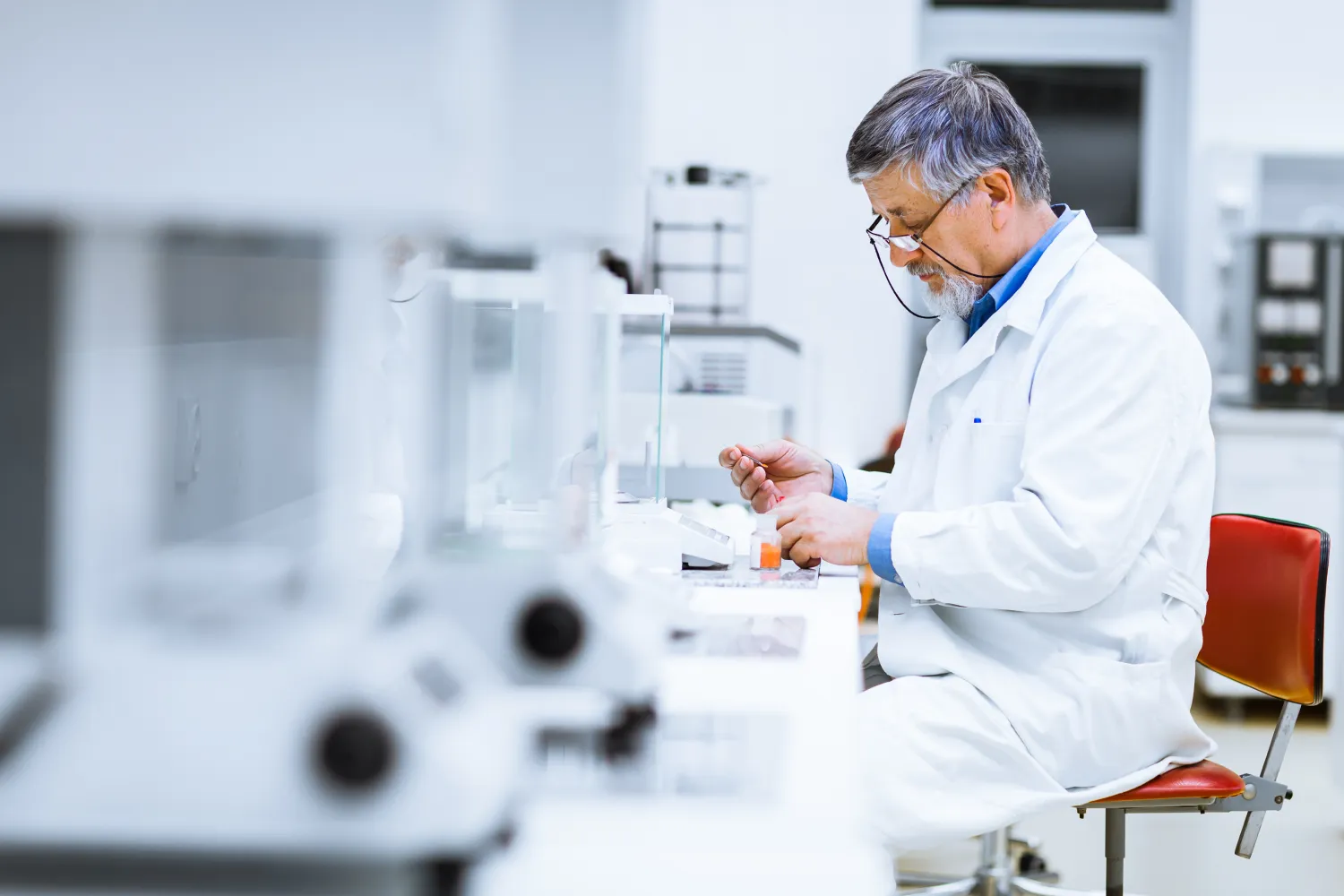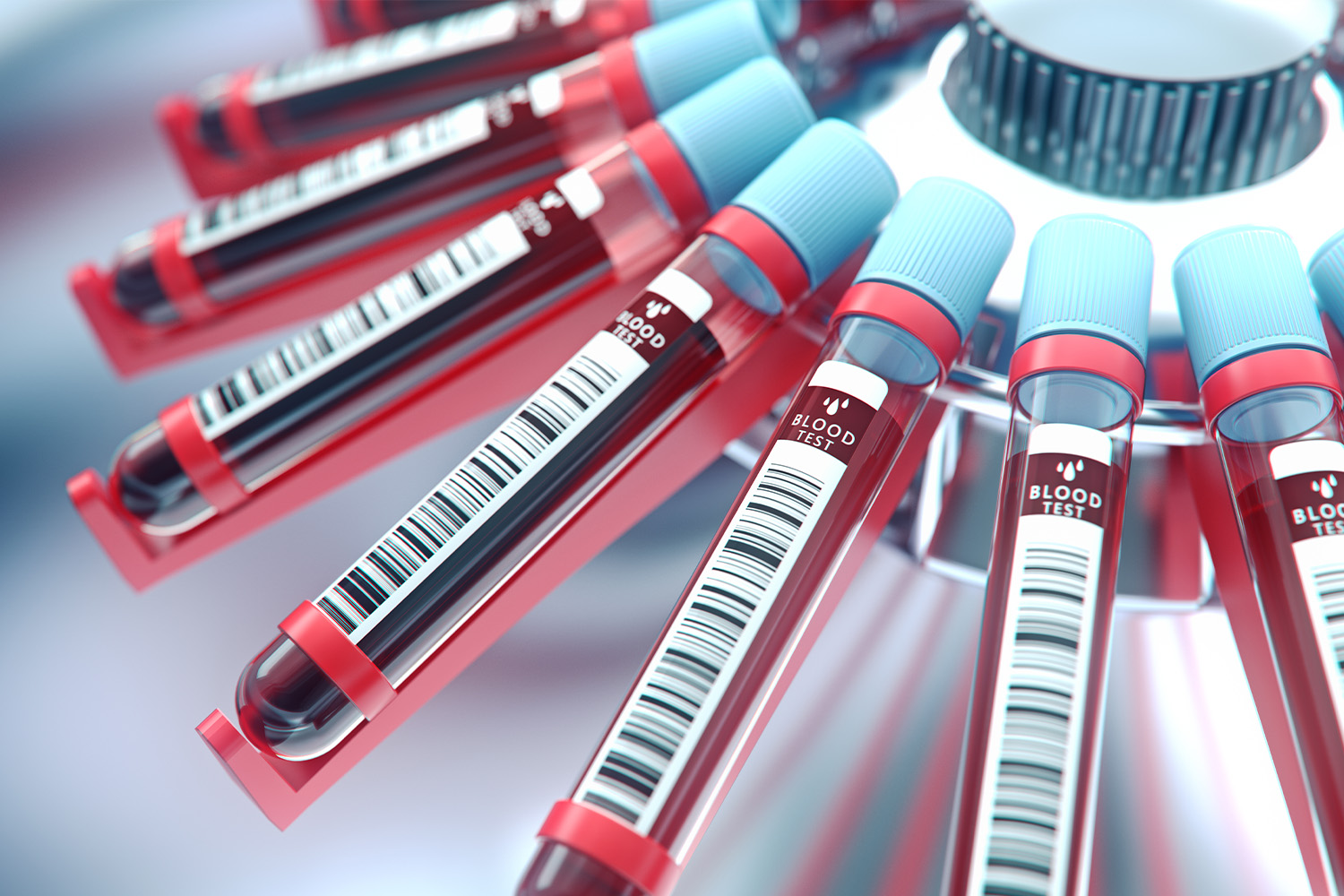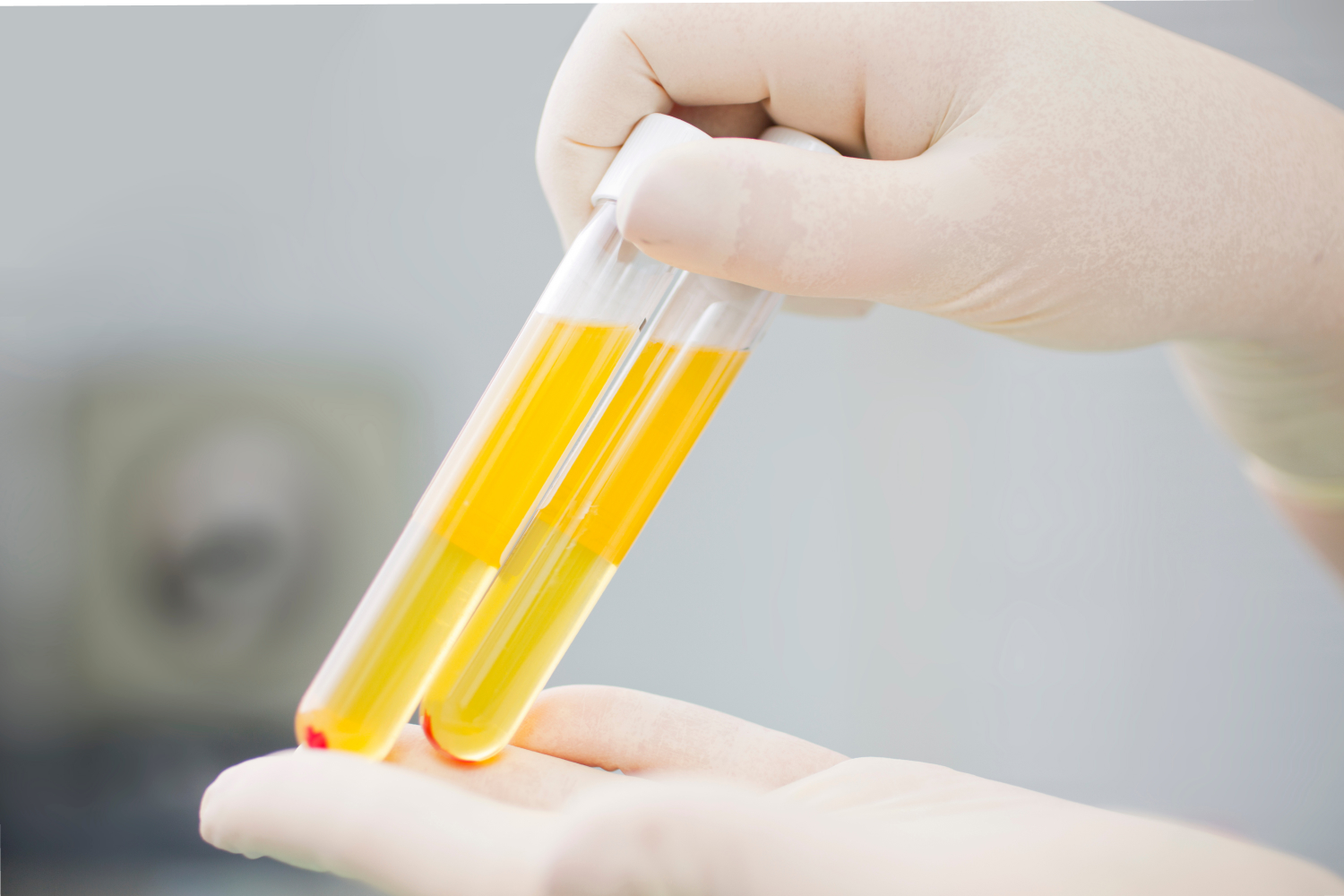Within medical research, two important components stand out for their significant roles: Peripheral Whole Blood and Peripheral Blood Mononuclear Cells (PBMCs). At iProcess Global Research, we recognize these elements’ profound impact in driving forward the frontiers of healthcare innovation.
Peripheral Whole Blood, encompassing a full spectrum of blood components, offers a comprehensive view of the body’s systemic condition. On the other hand, PBMCs, integral to the immune system, provide a focused lens on specific immune responses.
Our goal is to illuminate these elements’ unique characteristics and applications, offering researchers a deeper understanding of their potential in various study domains. By getting into the nuances of Peripheral Whole Blood and PBMCs, we aim to set a foundation for informed research decisions and breakthrough discoveries in medical science.
What Is Peripheral Whole Blood?
Peripheral Whole Blood is a direct extraction of blood that includes all its primary components:
- Red blood cells (RBCs)
- White blood cells (WBCs)
- Platelets
- Plasma
It is essential in medical research and clinical diagnostics, offering a holistic view of an individual’s health status. The analysis of Peripheral Whole Blood can reveal information about the body’s functioning, including the detection of diseases, monitoring of health conditions, and assessment of treatment responses.
Its comprehensive nature makes it a fundamental resource for studying a wide array of medical conditions, from genetic disorders to infectious diseases.
What Are PBMCs and Their Functions?
Peripheral Blood Mononuclear Cells (PBMCs) are important immune system components, consisting of lymphocytes (T cells, B cells, and NK cells) and monocytes. These cells play a significant role in the body’s immune response, orchestrating defense mechanisms against infections and diseases.
In medical research — particularly in the field of immunology — PBMCs are invaluable for their ability to shed light on immune system functioning and disorders. Their isolation from Peripheral Whole Blood is a key process in immunological studies, enabling researchers to examine immune responses at a cellular level.
PBMCs are instrumental in exploring the mechanisms of autoimmune diseases, infectious diseases, and the development of immune-based therapies. They provide a focused perspective on the body’s immune activities, making them indispensable in advancing our understanding and treatment of various immune-related conditions.
How Are Peripheral Whole Blood and PBMCs Collected?
The collection of Peripheral Whole Blood is typically conducted through venipuncture, a standard and relatively straightforward process. This procedure draws blood directly from a vein into a collection tube, capturing the complete range of blood components. Venipuncture is common in clinical and research settings due to its efficiency and comprehensive data.
In contrast, the isolation of PBMCs from Peripheral Whole Blood involves more intricate techniques, primarily density gradient centrifugation. This process separates PBMCs from other blood components based on their density, allowing for the extraction of these specific cells. Isolating PBMCs lies in the precision required to ensure the purity and viability of the cells, which are crucial for accurate research outcomes.
Comparing these methodologies, it’s evident that while Peripheral Whole Blood collection is relatively simple, isolating PBMCs requires more specialized equipment and expertise. Each technique, however, is important in its own right, serving specific purposes in medical research and offering unique insights into human health.
Why Is Peripheral Whole Blood Important in Clinical Research?
Peripheral Whole Blood is integral to clinical research for several reasons, each underscoring its value in advancing medical knowledge and patient care:
- Comprehensive Health Assessment: It offers a broad overview of an individual’s health, encompassing a range of markers from blood cell counts to biochemical indicators.
- Disease Diagnosis: Its analysis is important in diagnosing various conditions, from infections to genetic disorders, by detecting abnormalities in blood components.
- Treatment Monitoring: It enables tracking of a patient’s response to therapies, essential in conditions like cancer or chronic illnesses.
- Research Versatility: Its wide range of components makes it suitable for diverse research applications, from studying disease mechanisms to testing new drugs.
- Immediate Availability: Being easily accessible through standard venipuncture, it provides a readily available sample for urgent diagnostic and research needs.
- Baseline Health Data: It serves as a fundamental reference point in clinical trials, helping to evaluate the impact of experimental treatments or interventions.
How Do PBMCs Contribute to Immunological Research?
PBMCs are essential in immunological research, offering unique insights into the human immune system’s intricacies. Their contributions are vast and varied, underscoring their indispensable role in advancing our understanding of immunology:
- Immune Response Insights: PBMCs are key to understanding how the body responds to pathogens, providing a window into the dynamics of immune cells like T cells, B cells, and NK cells.
- Disease Mechanism Analysis: They are important for studying the mechanisms underlying various immune-related diseases, including autoimmune disorders, infectious diseases, and cancers.
- Vaccine Development: PBMCs are instrumental in vaccine research, helping to evaluate immune responses to new vaccines and understand their efficacy and safety.
- Therapeutic Research: They enable the exploration of new therapeutic approaches for treating immune-mediated diseases. This includes the development of immunotherapies for conditions like cancer.
- Personalized Medicine: By analyzing the specific immune cell profiles in PBMCs, researchers can tailor treatments to individual patient needs, enhancing the effectiveness of immunotherapies.
- Biomarker Discovery: PBMCs are a rich source for identifying biomarkers that can predict disease progression or response to treatments, essential for early diagnosis and customized treatment plans.
- Translational Research: They bridge the gap between basic science and clinical applications, allowing for the translation of laboratory findings into practical medical interventions.
Comparing the Applications: Where Does Each Excel?
The utilization of Peripheral Whole Blood and Peripheral Blood Mononuclear Cells (PBMCs) in medical research varies, each excelling in different scenarios based on the specific requirements of the study:
Peripheral Whole Blood:
- Broad Overview Analysis: Ideal for studies requiring a complete blood profile, including understanding systemic responses in the body.
- Diagnostic Applications: Used extensively in diagnostic tests, where the analysis of the whole blood composition is necessary.
- Ease of Collection: Preferred in studies where less invasive and quicker collection methods are advantageous.
PBMCs:
- Immunological Research: Superior for studies focused on the immune system, such as vaccine development and immunotherapy.
- Disease Mechanism Studies: More effective in research targeting specific immune responses, like in autoimmune disorders or infections.
- Cellular Behavior: Essential for experiments investigating the behavior of specific immune cells under various conditions.
Each component offers unique insights, making the choice dependent on the research goals, whether it’s a comprehensive blood analysis or a focused immune cell study.
What Are the Challenges in Handling and Analyzing Both?
Handling and analyzing both Peripheral Whole Blood and PBMCs present unique challenges that can significantly impact the outcomes of medical research.
These challenges include:
- Collection and Preservation: Ensuring the integrity of Peripheral Whole Blood and PBMCs during collection and preservation is important. Mishandling can lead to cell degradation or altered results.
- Isolation Techniques: The process of isolating PBMCs from Peripheral Whole Blood is intricate and requires precision. Any error in this step can compromise the quality of PBMCs, affecting their viability for research.
- Storage Conditions: Both types of samples have specific storage requirements. Failure to maintain these conditions can lead to sample degradation, affecting the reliability of research data.
- Interpretation of Results: Accurate interpretation of data from these samples requires expertise and understanding of their biological implications. Misinterpretation can lead to incorrect conclusions.
- Technological Limitations: The need for advanced technology and expertise for processing and analyzing these samples can be a barrier, particularly in resource-limited settings.
At iProcess Global Research, we understand these challenges and provide comprehensive solutions. Our expertise in biospecimen collection and analysis ensures that researchers receive high-quality samples, while our technological capabilities facilitate accurate data interpretation.
What Are Future Prospects in Research Utilizing Peripheral Whole Blood and PBMCs?
The future of research utilizing Peripheral Whole Blood and PBMCs holds exciting prospects, driven by advancements in technology and a deeper understanding of human biology:
- Personalized Medicine: As our understanding of individual immune responses grows, the use of PBMCs in personalized medicine, particularly in tailoring immunotherapies, is expected to increase.
- Advanced Diagnostics: Peripheral Whole Blood could play a significant role in the development of more advanced diagnostic tools, allowing for quicker and more accurate disease detection.
- Innovative Treatment Approaches: Research using PBMCs is likely to contribute to innovative treatment approaches for a range of diseases, from autoimmune disorders to cancers.
- Improved Vaccines: The study of immune responses using PBMCs will be key in developing more effective vaccines, particularly in response to emerging infectious diseases.
- Integration with Big Data: Leveraging big data and AI, research involving these blood components can lead to breakthroughs in understanding complex diseases at a systemic level.
As research continues to evolve, Peripheral Whole Blood and PBMCs will undoubtedly remain at the forefront of medical advancements, contributing significantly to our understanding of health and disease.
Conclusion
Peripheral Whole Blood and Peripheral Blood Mononuclear Cells (PBMCs) stand at the forefront of medical research, each offering unique insights for scientific progress. Their distinct roles, from providing a comprehensive health overview to focusing on immune system responses, are pivotal in advancing our understanding of human health.
At iProcess Global Research, we recognize their significant contributions to clinical research and immunology. As we continue exploring these essential blood components, their potential to revolutionize personalized medicine, diagnostics, and therapeutic innovations is unparalleled — it’s driving the future of healthcare research toward new horizons of discovery and treatment.
To learn more about research and medical development, visit our resources.
Sources:
Peripheral Blood Cell – an overview | ScienceDirect Topics
Peripheral Blood Mononuclear Cell – an overview | ScienceDirect Topics
Peripheral Blood Mononuclear Cells – The Impact of Food Bioactives on Health | NCBI




